THE LANDSCAPING SOLUTIONS BLOG
Welcome to our Blog. Inspiration, updates and industry trends from the team at Landscaping Solutions.
THE SUSTAINABLE AESTHETIC
In late 2019 we collaborated with Jilayne Rickards on a small urban garden she designed for a great client in North London. Jilayne christened the scheme ‘The Urban Retreat’.
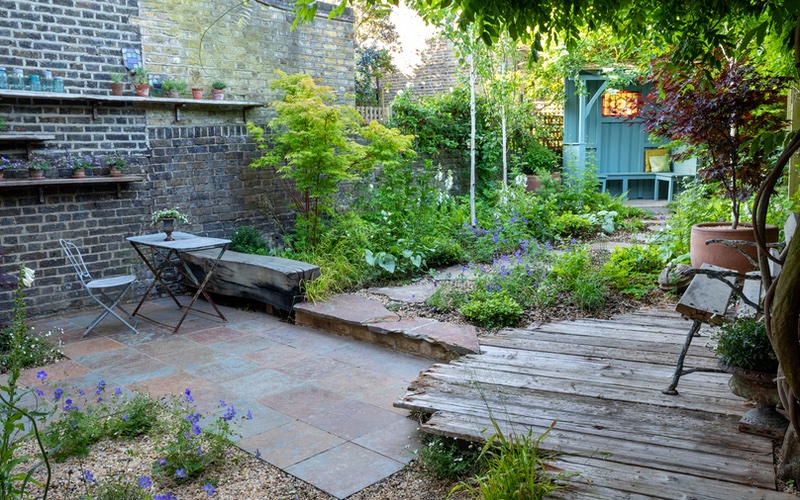
The Urban Retreat in North London, designed by Jilayne Rickards and built by Landscaping Solutions.
Jilayne’s vision was for the garden to be both beautiful and sustainable. In December last year we discovered the garden had picked up four British Association of Landscape Industries awards. The most satisfying of these for us was the award for best use of recycled and reclaimed materials. The recognition this garden received from BALI and the interest and acclaim it has garnered from the wider public offers hope for what we call ‘The sustainable aesthetic’. The more media coverage gardens of this type obtain the more they will come to be considered desirable by the general public and the more likely their guiding ethos will become mainstream thought.
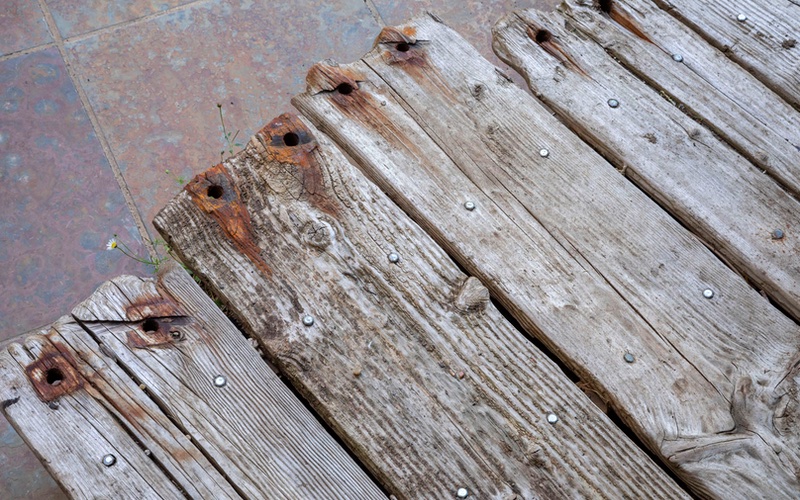
Reclaimed Douglas Fir decking, one of the many recycled and reclaimed materials used throughout the garden.
What is the ethos of the sustainable aesthetic and why is it important? The sustainable garden weathers well in the British climate, blends in with its surroundings, accommodates and encourages interaction with wildlife and does not damage the environment in its creation. It follows a number of principles;
Protect and nurture the holy trinity of soil, plants and insects. Do this and good things will follow. In ‘The Urban Retreat’ all soil was kept on site.
Reduce waste. In this garden all existing pots and planters were recycled along with the brick work. Paving sub-base materials were re-used where appropriate or sent for off-site recycling with any green waste produced. Energetic waste can also be reduced by designing closed systems and features that have multiple benefits. For example, planting Comfrey for its aesthetic appeal, ability to attract and feed insects, provision of composting material and medicinal applications.
We can further reduce waste by working with the existing lay of the land, soil type, microclimate, ‘hard’ and ‘soft’ vernacular, moisture levels, ‘habitat’ type, etc. The existing garden had a woodland edge feel and Jilayne used this to inform her plant choices. Woodland edge gardens are cooling and relaxing in the heat of a city summer.
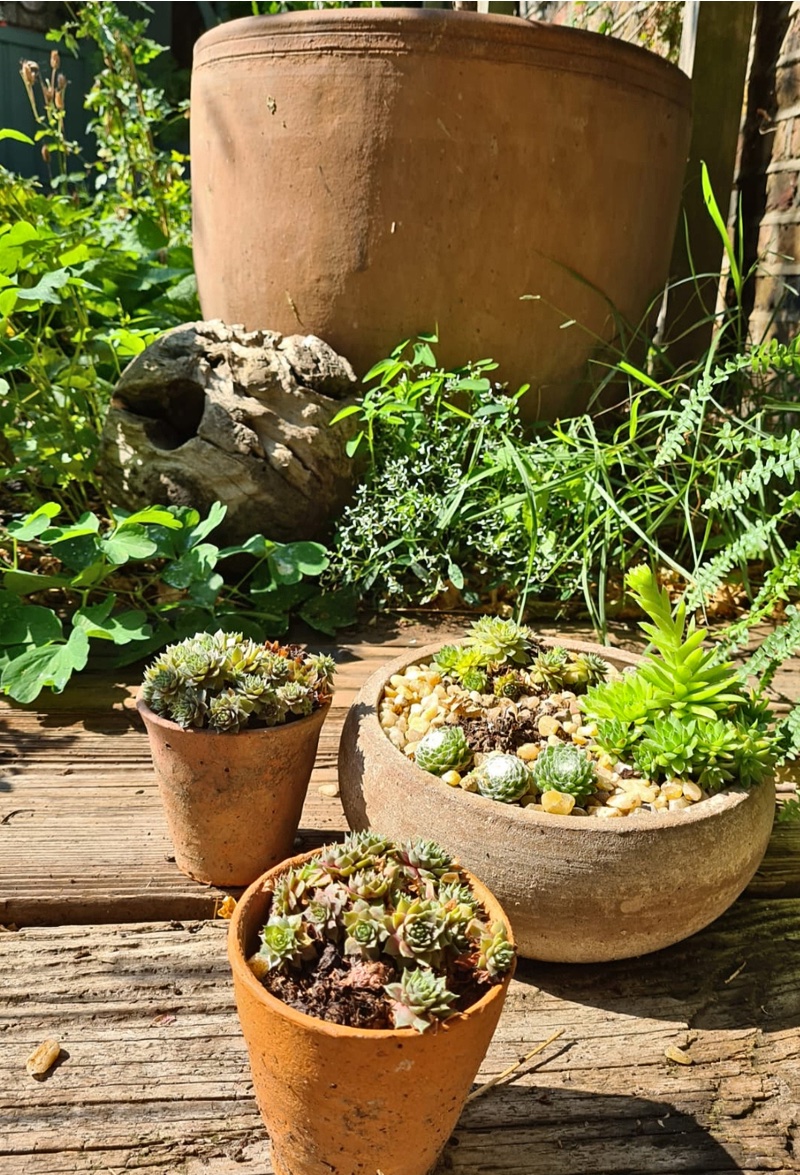
Existing pots and planters were recycled and wildlife friendly planting was retained.
Useful, wildlife friendly planting was retained and any unwanted plants were donated to other gardeners. A mature Elder was a prominent existing feature. What plant can better connect us to the environment and other lifeforms? In winter it looks a wreck and we wonder will it manage to limp on through to spring? But what a change once the sap starts to rise. The leaves come on early, connecting us to the cycle of re-birth out of decay. The summer flowers are an insect magnet and can be made in to refreshing drinks. The autumn berries feed birds and small mammals whilst boosting our immune systems through winter when processed in to medicinal food and drink. Dried out Elder canes are also the best material for the hand drill-one of the first ways our ancestors kindled fire. Try it yourself to fully appreciate their achievements! Plants of this kind re-connect us with our history and birthright and, in doing so, help dispel the illusion that we are somehow ‘outside’ of nature. Through constant exposure to the damaging aspects of our existence we have grown to believe degradation is our hallmark. Gardens are the one of the arenas in which we can reassert the positive elements of human intervention and perhaps see our purpose on this planet.
Specify plants and hardscape that don’t need mollycoddling. Opt for resilient plants and stone and timber types that don’t need constant sealing or cleaning. Reclaimed materials achieve this end and also tick the sustainability box- they have not been newly created and therefore no further finite resources have been consumed. In terms of timber, we used reclaimed Douglas Fir decking and shelving and reclaimed Oak for the seating block/retaining wall in this garden. Reclaimed slate and granite was used for the paving. Jilayne and the client went shopping in local markets for the second hand furniture, fixtures and fittings. All the reclaimed materials were of British provenance. When reclaimed wood cannot be used specify locally sourced FSC-certified timber from trusted suppliers.

Reclaimed timber, slate and granite were used throughout the garden as well as second hand furniture, fixtures and fittings.
Permeable surfaces allow rain water to percolate back in to the ground and to that end gravel was used extensively in this garden. More generally, look to make surfaces more porous with the aim of increasing biodiversity. Block and brick retaining walls could be replaced with gabions which allow unwanted existing materials such as paving and walling to be used as in-fill.
Sustainable gardens aim to be as ‘soft’ as possible. Planting should be diverse, successional and nectar-rich. Utilise a range of trees, shrubs, climbers, grasses and bulbs to provide food and shelter for wildlife. Don’t forget; attractiveness to humans is of equal importance if the garden is to be considered a success by the client!
Go easy on garden lighting and chemical weed and pest control. Neither were used in this scheme.
However, the garden wasn’t a perfect example of sustainability. There were a number of areas where our activities were damaging;
- Cement and adhesives were used. Both material have a high environmental impact.
- Fossil fuels were consumed and pollutants produced in travelling to and from site.
- Space restrictions dictated all deliveries were bagged. To reduce waste specify loose deliveries wherever possible.
- Gravel extraction degrades wildlife habitat.
How can we improve? At Landscaping Solutions we are committed to continual professional development through seminars, courses, workshops and personal study. Integration of environmental assessments to our CDM process helps us think about how we can reduce our impact and guides our landscape design decisions and installation techniques. This is a great tool but can only take us so far due to the fact that much of the raw information is based on intuition. There is a need to develop an industry accepted framework to help us better understand the relative impact of various materials and practices. For instance, we might assume artificial turf to be more impactful than paving but in some instances artificial turf allows the ground to ‘breath’ more than paving. Leave artificial turf to its own devices and it develops into ‘habitat’ much quicker than paving, rapidly hosting an array of plant and invertebrate life. However, can it be recycled satisfactorily? And which of these is most environmentally impactful; quarried British Yorkstone or Italian porcelain? What about quarried Indian sandstone v Italian porcelain? Or Indian sandstone v Indian porcelain. Yorkstone v Portland Stone? Portland stone from open cast extraction v undersea deposits? These are complicated questions.
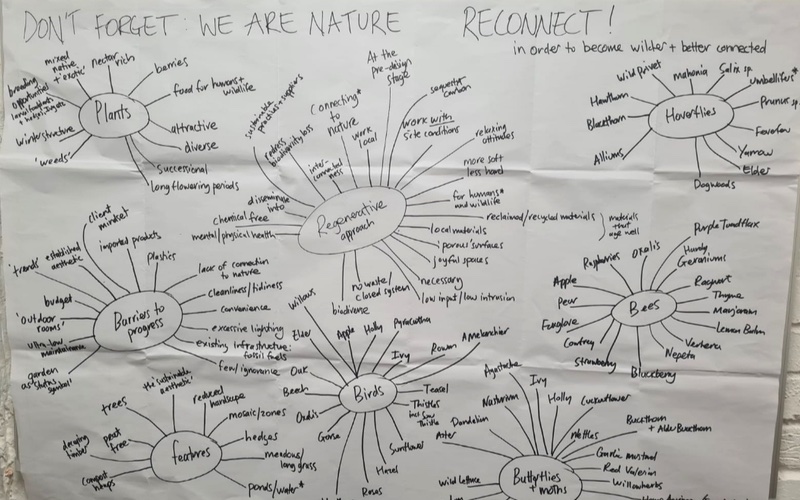
Regular brainstorming sessions helped guide our design decisions and installation techniques.
Good reliable information will enable us to compile a database of suppliers employing sustainable practices. For ‘The Urban Retreat’ we used Ashwells Timber and CED Stone.
Responsive clients might be encouraged to engage with food production be it wild or cultivated and on whatever scale possible. This takes the pressure off the industrial agricultural system, promotes personal resilience, self-sufficiency, understanding of our role in the ecosystem, empathy with other life forms and mental and physical health. Studies have shown low-input vegetable and fruit allotments to be the most biodiverse land use in the country. They can be further improved by providing a body of water and adding on-site composting facilities.
One last piece of advice; don’t forget to have fun!
FROM NEW YORK TO LONDON - THE CAMDEN HIGH LINE
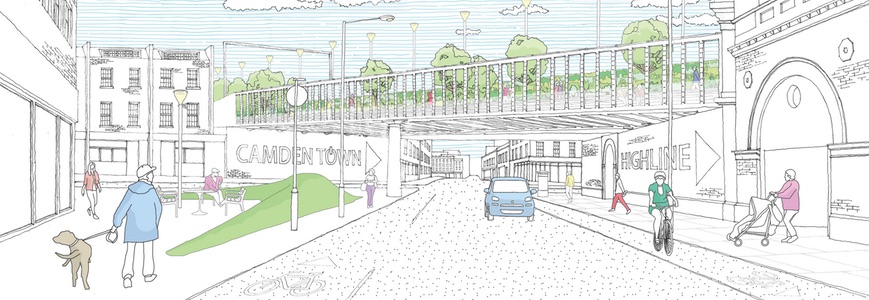
A recent bid to transform an old section of raised railway track in North London into an elevated garden could provide London with its answer to New York City’s famous ‘High Line’, a public park built on a historic freight railway elevated above the streets of Manhattan.
Proposed by local business development agency Camden Town Unlimited (a non-profit organisation), this North London counterpart would see a 0.8km long and 18m wide disused elevated railway track near Camden Town station converted in to a public green space and commuting route.
Eight meters off the ground, the public garden would provide a direct link between Camden and King's Cross, cutting commuting time between the two to only ten minutes for pedestrians and even less for cyclists.
Originally built as part of the North London Railway, the abandoned track crosses eight roads and seven bridges running all the way from Kentish Town Road to King’s Cross. Once completed the proposed Camden High Line would feature a garden walkway and a landscaped park and would be completely free to use making it accessible to everyone.
With a firm belief that the completed project would positively impact the local residents and surrounding neighbourhoods, a number of campaigners are urging local residents and Londoners alike to pledge their support for the project through the campaigns crowdfunding page.
If successful, it is hoped money raised through the the crowdfunding campaign would take the project to the next stage which would include site appraisals and surveys as well as help to pay for exhibitions, events and workshops to further promote the project.
Landscaping Solutions company director Ben West feels Camden would benefit greatly from a project of this nature; "Having visited the New York High Line myself last year, its difficult to deny the benefits of a project such as this. If London can achieve the same level of success as the New York scheme by repurposing such a prominent piece of the urban landscape then its definitely something worth pursuing”. said Ben.
For further information regarding the Camden High Line or to support the project through its crowdfunding page click here.